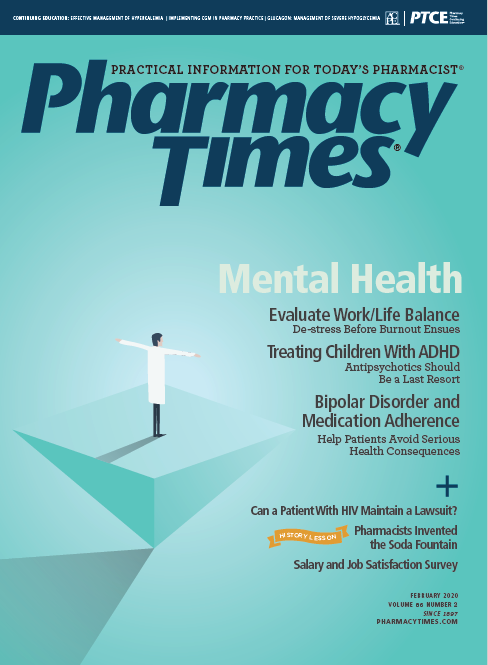Publication
Article
Pharmacy Times
Drug Name Confusion With Methotrexate Can Cause Fatal Errors
Author(s):
Implementation of critical risk-reduction strategies is needed to prevent continued patient harm.
The institute for safe medication practices (ISMP) continues to receive reports of fatal errors as a result of name confusion with methotrexate and other drugs. It is time for the health care industry, including practitioners, to implement critical risk-reduction strategies to prevent these errors. Two recent cases are described below.
CASE 1
Paxil (paroxetine) was newly prescribed for an elderly woman with depression. A prescription for a 30-day supply of Paxil 10 mg daily was called into the pharmacy. Unfortunately, pharmacy staff members likely misheard Paxil as Trexall (methotrexate). Trexall 10-mg tablets were dispensed with directions to take 1 tablet daily. The dosing error was not detected prior to dispensing, and the woman was not counseled when she picked up the medication. The pharmacy label prominently displayed the brand name, Trexall, but the woman thought that this was the newly prescribed antidepressant and began taking it daily. Seven days later, she became extremely ill. Her family took her to the hospital, where she was admitted to an intensive care unit. Sadly, she died within a week.
This is the first report that the ISMP has received of a fatal daily methotrexate order linked to a Paxil-Trexall mix-up. However, this soundalike name pair is particularly concerning. Unlike generic brands of methotrexate, which are available only as 2.5-mg tablets, Trexall is available in 5-, 7.5-, 10-, and 15-mg tablet strengths, some of which can overlap with doses of Paxil.
CASE 2
A fatal mix-up with metolazone and methotrexate has been reported through various media outlets.1,2 A patient in an assisted-living facility died after mistakenly receiving methotrexate instead of metolazone, a thiazide diuretic. The pharmacy had accidentally sent the wrong prescription to the facility, and the error was not identified. The assisted-living facility staff then administered the wrong medication to the patient, who eventually began experiencing severe discomfort and pain. The patient died about 1 month after the daily methotrexate was started.
One of the most common contributing factors to drug name mix-ups reported to the ISMP is when the first few letters used to search for a drug bring up multiple drug names on the computer screen. The risk of a selection error increases when the drugs share similar dosage forms and strengths. In this example, these drug names share the first 3 letters (M-E-T), and both are available in 2.5-mg (generic) and 5-mg tablet strengths (generic metolazone and the brand name for methotrexate, Trexall). When only M-E-T is typed, methimazole, metolazone, and methotrexate all appear and list a 2.5-mg oral solid dosage form. Other drug names, such as methamphetamine, methergine, methylphenidate, methylprednisolone, metoclopramide, metoprolol, and metronidazole, may also appear on screen.
SAFE PRACTICE RECOMMENDATIONS
Daily doses of methotrexate are reserved for specific cancer diagnoses. Both electronic health record and pharmacy computer systems should be programmed to default to a weekly oral methotrexate dose and should be designed to alert practitioners to potentially inadvertent daily doses.
To help prevent drug name mix-ups in electronic systems, the ISMP recommends typing at least 5 letters to reduce the number of drug names that might appear on screen.3 In reality, however, it may require more than 5 letters to eliminate all but the intended drug. Including the drug strength in the search may further limit the similar names that appear on a screen.
Including the indication with all prescribed drugs may also help avoid errors. Although indication-based prescribing systems are not available commercially, just including the intended purpose in the directions when prescribing drugs might be enough to prevent errors. For example, “for fluid retention: metolazone 2.5 mg” or “metolazone 2.5 mg daily (for fluid retention).”
Before dispensing methotrexate, verification of the dose, frequency, and indication is required. Patient education is also required. These steps provide an opportunity for the pharmacist to recognize an error if the wrong drug is being dispensed. As a safe practice, consider establishing a system to ensure review of all methotrexate prescriptions that have been dispensed for patients within the past 24 hours. A consumer learning guide for oral methotrexate from the ISMP is freely available to provide to patients who take oral methotrexate to treat conditions other than cancer.4
Michael J. Gaunt, PharmD, is a medication safety analyst and the editor of ISMP Medication Safety Alert! Community/Ambulatory Care Edition.
REFERENCES
- Nielsen L, Williams C. Lawsuit claims Utah woman died after she was mistakenly given chemotherapy medication. KSL.com. August 8, 2019. ksl.com/article/46612893/lawsuit-claims-utah-woman-died-after-she-was-mistakenly-given-chemotherapy-medication. Accessed December 13, 2019.
- Johnson S. Lawsuit claims Utah county woman died after mistakenly being given chemotherapy drugs. Daily Herald. August 8, 2019. heraldextra.com/news/local/central/orem/lawsuit-claims-utah-county-woman-died-after-mistakenly-being-given/article_bc605970-efd0-5610-9bdb-ef384ff10956.html. Accessed December 13, 2019.
- Guidelines for safe electronic communication of medication information. Institute for Safe Medication Practices website. ismp.org/resources/guidelines-safe-electronic-communication-medication-information. Published January 16, 2019. Accessed December 13, 2019.
- Institute for Safe Medication Practices. High-alert medication learning guides. ConsumerMedSafety.org website. consumermedsafety.org/medication-safety-articles/item/847-teaching-sheets. Published November 16, 2018. Accessed December 13, 2019.







